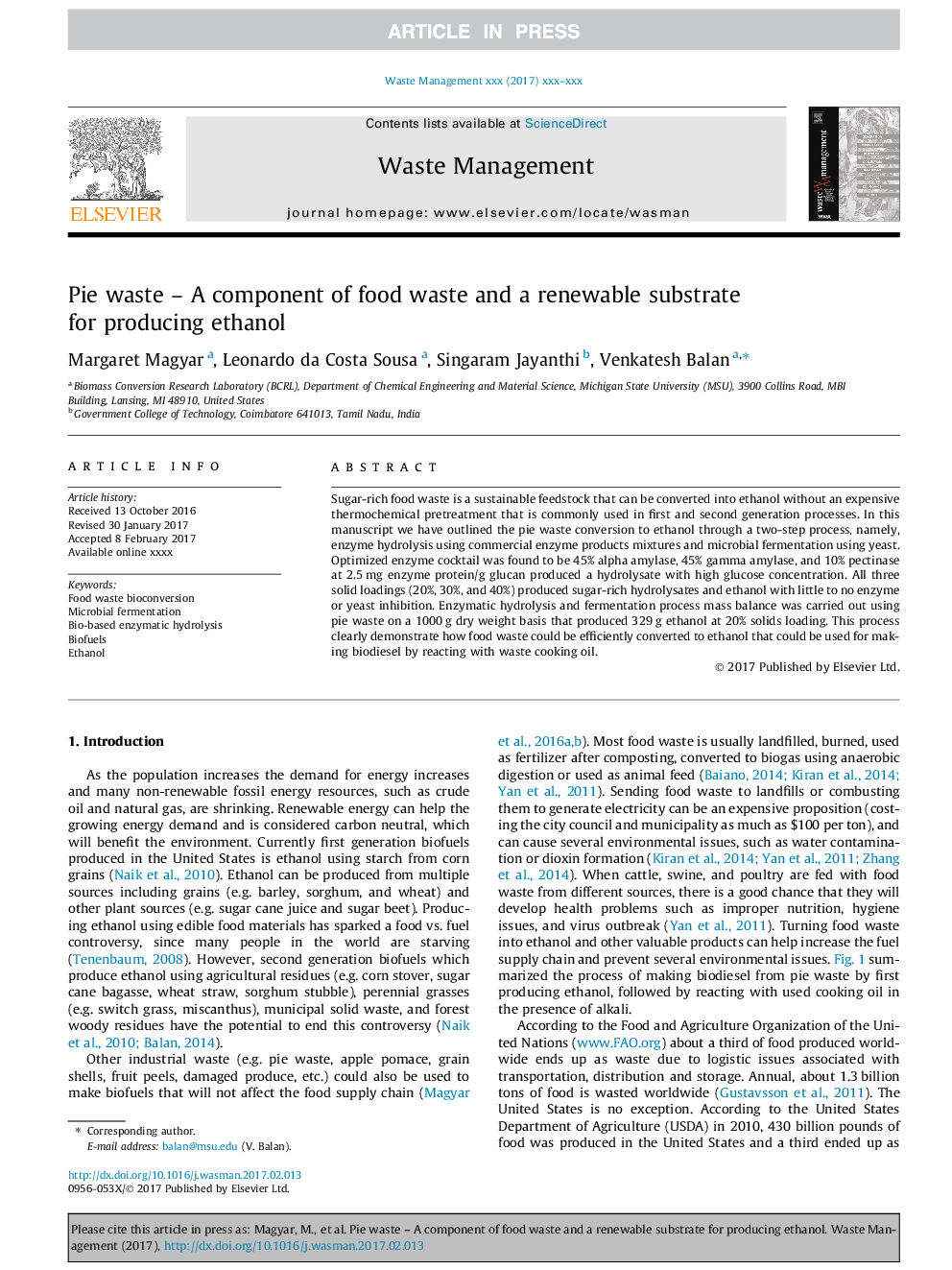| Article ID | Journal | Published Year | Pages | File Type |
|---|---|---|---|---|
| 5756921 | Waste Management | 2017 | 8 Pages |
Abstract
Sugar-rich food waste is a sustainable feedstock that can be converted into ethanol without an expensive thermochemical pretreatment that is commonly used in first and second generation processes. In this manuscript we have outlined the pie waste conversion to ethanol through a two-step process, namely, enzyme hydrolysis using commercial enzyme products mixtures and microbial fermentation using yeast. Optimized enzyme cocktail was found to be 45% alpha amylase, 45% gamma amylase, and 10% pectinase at 2.5Â mg enzyme protein/g glucan produced a hydrolysate with high glucose concentration. All three solid loadings (20%, 30%, and 40%) produced sugar-rich hydrolysates and ethanol with little to no enzyme or yeast inhibition. Enzymatic hydrolysis and fermentation process mass balance was carried out using pie waste on a 1000Â g dry weight basis that produced 329Â g ethanol at 20% solids loading. This process clearly demonstrate how food waste could be efficiently converted to ethanol that could be used for making biodiesel by reacting with waste cooking oil.
Related Topics
Physical Sciences and Engineering
Earth and Planetary Sciences
Geotechnical Engineering and Engineering Geology
Authors
Margaret Magyar, Leonardo da Costa Sousa, Singaram Jayanthi, Venkatesh Balan,
